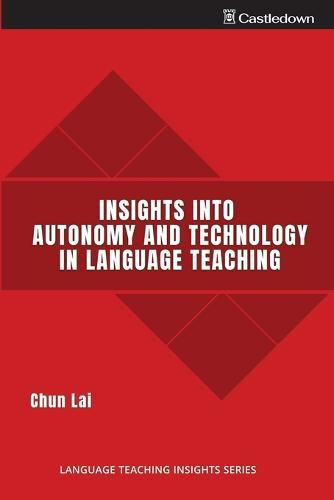Readings Newsletter
Become a Readings Member to make your shopping experience even easier.
Sign in or sign up for free!
You’re not far away from qualifying for FREE standard shipping within Australia
You’ve qualified for FREE standard shipping within Australia
The cart is loading…






This title is printed to order. This book may have been self-published. If so, we cannot guarantee the quality of the content. In the main most books will have gone through the editing process however some may not. We therefore suggest that you be aware of this before ordering this book. If in doubt check either the author or publisher’s details as we are unable to accept any returns unless they are faulty. Please contact us if you have any questions.
Technology and autonomy share a common mission in language education, that is, to transform language education into learner-centered learning across boundaries. With this shared mission, technology and autonomy are closely intertwined, shaping the role of each other in language education. The two, if in harmony and mutually supportive, may work in synergy and reinforce each other in achieving the goal. Drawing on the literature and research findings from relevant research fields, including educational technology, educational psychology, adult and workplace learning and language education, this book gives an overview of the relationship of technology with learner and teacher autonomy. It discusses how technology both benefits and constrains autonomy, and how a positive interaction between the two could be fostered. It underscores a critical perspective in understanding their relationships and a holistic approach to boosting a positive reciprocal relationship between the two.
Table of contents
??Introduction
PART I LEARNER AUTONOMY AND TECHNOLOGY
1 Learner Autonomy and Technology: An Introduction
2 Technology as a Facilitator of Learner Autonomy
3 Technology as a Constraint on Learner Autonomy
4 Factors that Influence Technology and Learner Autonomy
5 Facilitating the Interaction between Learner Autonomy and Technology
PART II TEACHER AUTONOMY AND TECHNOLOGY
6 Teacher Autonomy and Technology: An Introduction
7 The Impact of Technology on Teacher Autonomy
8 Fostering Teacher Autonomy with Technology - The What
9 Fostering Teacher Autonomy with Technology - The How
Conclusion: Critical and Holistic Perspectives
References
Index
$9.00 standard shipping within Australia
FREE standard shipping within Australia for orders over $100.00
Express & International shipping calculated at checkout
This title is printed to order. This book may have been self-published. If so, we cannot guarantee the quality of the content. In the main most books will have gone through the editing process however some may not. We therefore suggest that you be aware of this before ordering this book. If in doubt check either the author or publisher’s details as we are unable to accept any returns unless they are faulty. Please contact us if you have any questions.
Technology and autonomy share a common mission in language education, that is, to transform language education into learner-centered learning across boundaries. With this shared mission, technology and autonomy are closely intertwined, shaping the role of each other in language education. The two, if in harmony and mutually supportive, may work in synergy and reinforce each other in achieving the goal. Drawing on the literature and research findings from relevant research fields, including educational technology, educational psychology, adult and workplace learning and language education, this book gives an overview of the relationship of technology with learner and teacher autonomy. It discusses how technology both benefits and constrains autonomy, and how a positive interaction between the two could be fostered. It underscores a critical perspective in understanding their relationships and a holistic approach to boosting a positive reciprocal relationship between the two.
Table of contents
??Introduction
PART I LEARNER AUTONOMY AND TECHNOLOGY
1 Learner Autonomy and Technology: An Introduction
2 Technology as a Facilitator of Learner Autonomy
3 Technology as a Constraint on Learner Autonomy
4 Factors that Influence Technology and Learner Autonomy
5 Facilitating the Interaction between Learner Autonomy and Technology
PART II TEACHER AUTONOMY AND TECHNOLOGY
6 Teacher Autonomy and Technology: An Introduction
7 The Impact of Technology on Teacher Autonomy
8 Fostering Teacher Autonomy with Technology - The What
9 Fostering Teacher Autonomy with Technology - The How
Conclusion: Critical and Holistic Perspectives
References
Index